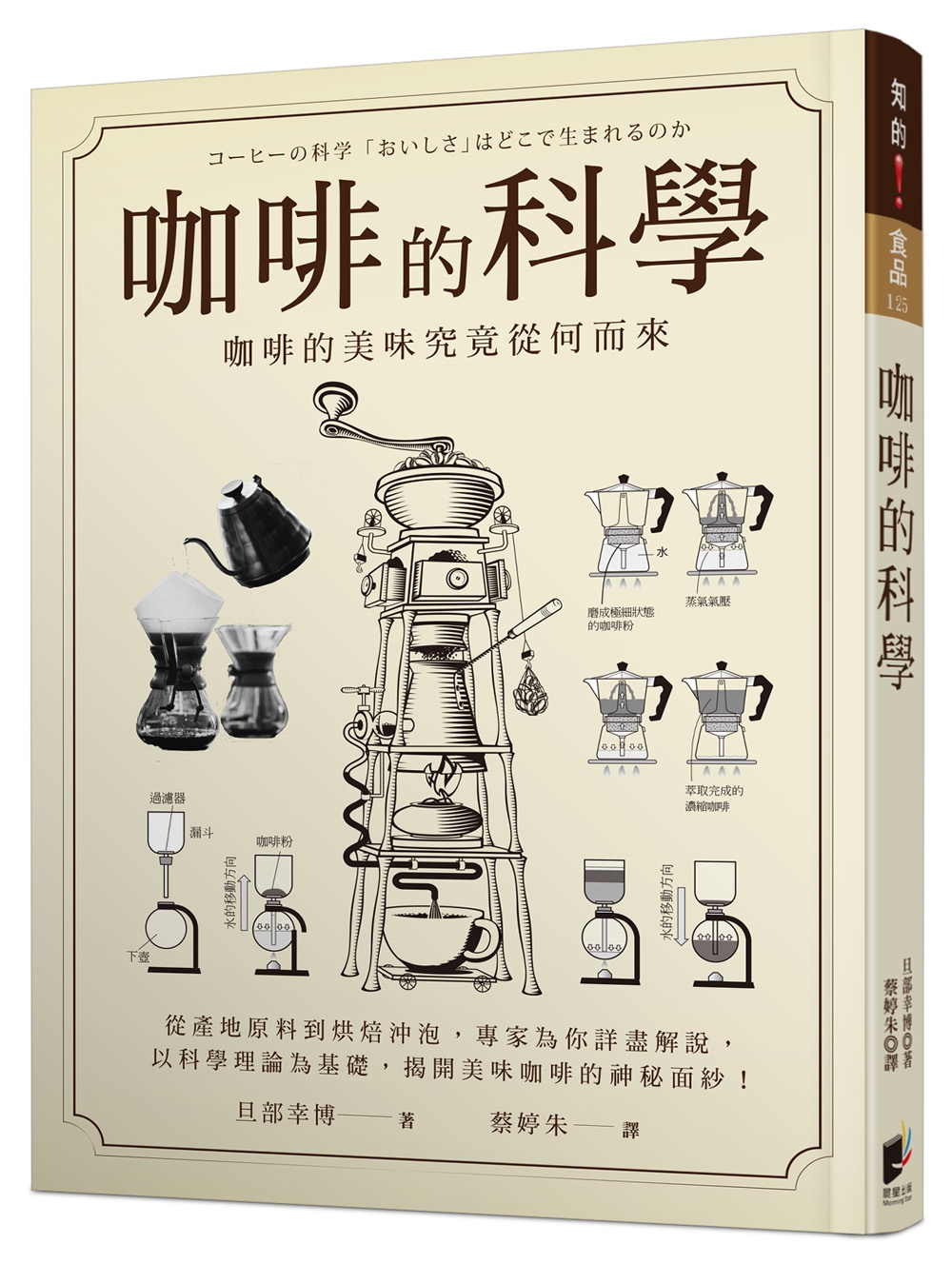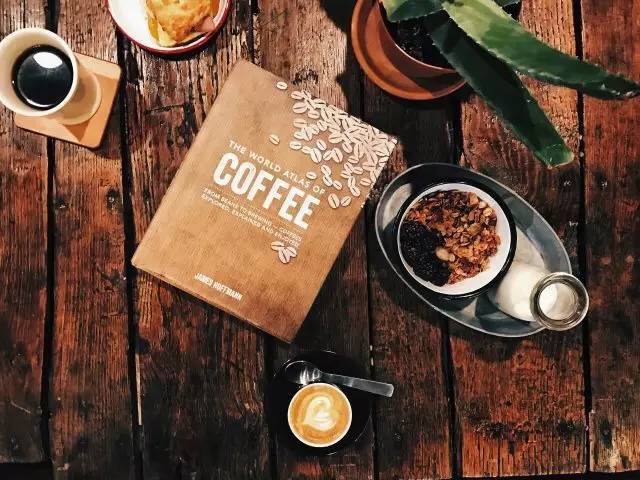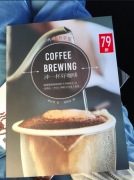Introduction to Coffee knowledge recommended book the Science of Coffee Pharmaceutical experts take you to explore the world of coffee

Professional coffee knowledge exchange more coffee bean information please follow the coffee workshop (Wechat official account cafe_style)
Can rookies with zero basics of coffee be on SCA? How much does it cost? How long is the study cycle?
Pharmaceutical experts take you to explore the world of coffee
From raw materials of origin to baking and brewing
The expert will explain it to you in detail.
Based on scientific theory
Unveil the mystery of delicious coffee!
This book will tell you:
How does ◆ accurately judge what is good coffee?
How does ◆ find the best coffee according to his own preferences?
◆, what do you know about coffee?
How does the origin, variety and roasting method of ◆ coffee beans affect the coffee flavor?
The "beans" of ◆ coffee beans do not mean beans.
What is the difference between ◆ 's "persistent bitter taste" and "bitter aftertaste"?
Which caffeine content is higher in ◆ light roasting or deep roasting?
Is it true that ◆ "roasting coffee beans over a charcoal fire can ripen the coffee bean core"?
Is it credible for ◆ to say that drinking coffee can reduce the risk of cancer?
The features of this book
1. The text is exquisite and the knowledge related to coffee is explained in detail.
two。 It covers a wide range of aspects, from coffee history to roasting and brewing, is a must-have book for getting started with coffee.
3. It is a practical reference book to analyze coffee flavor and explore coffee and health from a scientific point of view.
A brief introduction to the author
Danbu Xingbo
Born in Nagasaki Prefecture, Japan in 1969. After completing the course of Pharmaceutical Studies at the Institute of Pharmacy at Kyoto University, he is currently studying for a doctoral program and serves as an assistant professor and lecturer at Shiga University. Specializing in cancer-related genetics and microbiology. Run a popular coffee website "Baijiayuan", and give lectures to their own roasters or enterprises to discuss the aroma and health issues of coffee. He is the author of the Coffee equation of Taguchi Guard (co-author, published by Taiwan city-state).
A brief introduction to translators
Cai Tingzhu
Graduated from Japanese Department of Tunghai University. Once worked in a trading company and manufacturing industry, and worked hard to learn Japanese in order to learn more about Japan. Now living with the computer with one hand and the child with the other. The life of a pseudo-housewife. He has translated books such as "the boutique Coffee of Maruyama Jia" and "the cooking props & ingredients loved by life aestheticians".
Catalogue / book outline / summary
Preface
Chapter 1 what is coffee?
Understand science, coffee will be different!
Coffee has grown from scratch.
Fruit and coffee bean structure
The processing of coffee
(refining / baking / extraction)
Column's top coffee from animal ○○
Chapter 2 Coffee trees and beans
What is Rubiaceae plants?
The origin of coffee trees
Representative species of Coffee
(Arabica species / Canifra species / Liberian species)
Species and varieties
Arabica is a special species.
The historical process of Arabica species
Is coffee tree a "shade-loving plant"?
Coffee beans are not "beans"
Can planting raw beans sprout?
Coffee leaves and new buds
Why can coffee trees form caffeine?
The importance of "festival"
Coffee blooming season
Pollination and fertilization
The growth of fruits and coffee beans
Main cultivated varieties and their classification
Column Coffee Genome Survey
Column round beans, elephant beans, shell beans
Chapter 3 History of Coffee
The use of "coffee" in ancient times
The invention of coffee
History of cultivation and production techniques
(Origin of cultivation / spread of Tibika / spread of bourbon / invention of washing refinement / impact of rust transmission / discovery of Robusta / second rust transmission / era of quality and diversity)
The history of baking
The History of extraction Technology
(evolution from stewing to soaking / the wave of extraction utensils blown in Europe in the 19th century / new technology and the changes in the United States and Italy / after World War II at the beginning of the 20th century)
History of other related technologies
(alternative coffee and found caffeine / decaf / instant coffee / canned coffee)
Column the origin of another kind of coffee
Chapter 4 "delicious" of Coffee
Examine "delicious" from a scientific point of view
The protagonists of "delicious Coffee"
The "taste language" used in different regions is also different.
The contradiction of "delicious and bitter taste"
Explore the mystery of coffee taste
The importance of saliva
Molecular dynamics of flavor substances in oral cavity
Delicious food formed by molecular dynamics: taste and freshness
The richness of coffee
The difference between aromatic acid and dead acid
Aroma and delicacy
Pre-nasal aroma and postnasal aroma
Delicious at the pharmacological level
"good coffee" and "good coffee"
Physiology of Column taste
Column Blue Mountain Coffee Rhapsody
Chapter 5 forms delicious coffee ingredients
The bitterness of caffeine only accounts for 30% of the overall bitterness.
Looking for the protagonist of bitter taste
Strengthen the multiple components of bitterness
The sour taste of coffee and fruit
There are 1000 kinds of coffee aroma.
The ingredients that most resemble the aroma of coffee
Looking for S
Another problem of baking aroma and potato flavor
A distinctive supporting role
A smoky, deep-baked aroma
Is the coffee sweet?
Coffee with lemon scent
The aroma of blackcurrant hidden in Kenya
Explore the mystery of "mocha aroma"
It begins with the fragrance of mocha scattered in the world.
Coffee = fermented food
Controlled fermentation
Chapter 6 the Science of Baking
Let's try home baking.
Start baking.
Baking degree of eight stages
Heating process and temperature change
Physical changes in appearance and structure
(fine structure of coffee beans / start baking and glass transfer / re-hardening and internal pressure rise / coffee beans will burst twice / grease exudation)
Chemical change of composition
(change and maintain the original composition / complex and strange baking reaction / change the delicacy by the reaction process)
Menstrual deterioration after baking
Preservation method of baked beans
Professional baking and roasting machine
(classified by mixing method: drum type and fluidized bed type / according to heating mode: direct type, semi-hot air type, hot air type / baking method using roaster / importance of controlling firepower and exhaust / baking files)
All kinds of baking
(baking utensils without hot air / charcoal fire baking, far infrared baking / superheated steam baking)
The true strength of Japanese employees
The blind spot of scientists
Master the differences between coffee beans
Column finds his favorite coffee from the degree of roasting.
Column heat transfer mode and heating
Chapter 7 extracted Coffee
Grinding beans during extraction can add points to the delicacy.
Immersion extraction and filtration extraction
(basic principles of immersion extraction / filtration extraction)
Trickle extraction = chromatographic analysis
It is important to "stop" extraction
The basic temperature is "shallow high, deep low".
Grinding condition is also the key.
Foam can make coffee delicious.
(formation of foam and mechanism by which carbonic acid gas / foam will not disappear / foam separation and taste of coffee)
Filtering mode
Various extraction methodologies
(drip / siphon / espresso machine / filter / mocha pot / Turkish coffee and stew / ice drop coffee)
Unexpected commonalities between Column Coffee and printers
Column searching for the Origin of Japanese trickling Filtration
Chapter 8 Coffee and Health
The most important thing when thinking about health
What is trustworthy information?
The acute effect of coffee
(the mechanism of arousal and insomnia / caffeine / coffee can improve performance? Will the sports performance get better? / other acute effects)
Explore the long-term impact
Relevance and causality
The difficulties of interventional research
The long-term effects of coffee
(reduce the risk of type 2 diabetes / increase or decrease in the risk of cancer / relationship with cardiovascular disease / relationship with other diseases)
Who has the biggest positive and negative effect?
Drinking coffee contributes to longevity?
Publicize that coffee is not cost-effective
What happens if you have too much coffee?
(caffeine poisoning / caffeine withdrawal disorder (caffeine addiction) / caffeine and tolerance)
The boundary between excess and moderation
The discriminant method of "appropriate amount" for general adults
Objects that need to be paid special attention to during ingestion
(early pregnancy female / child-adolescent / relationship with mental illness, etc.)
Column Raw Bean scandal
The end.
reference
Indexes
Trial reading of e-books
§Coffee Genome Survey
In September 2014, an international team of researchers focused on France and the United States completed the genome analysis of coffee trees and published a paper in the journal Science'. The team did not choose the Arabica species, but used the Canifera species (Robusta) for analysis. The Canifera species was chosen considering that compared with the tetraploid Arabica species, the former has a smaller genome size and is more suitable for analysis. For Arabica species, in fact, part of the genetic data has been produced in a gene bank called EST in Brazil (ExpressionSequenceTagsLibrary). At present, the genome of Arabica species is continuously analyzed in comparison with the results of Canifera species.
What can be learned through genome analysis? The analysis team then listed all the genes that may be related to caffeine synthesis from coffee trees, and compared them with tea and cocoa, and found that only the gene group of coffee was very different from that of other plants. This also means that coffee has acquired the ability to synthesize caffeine alone in the process of evolution. In other words, for plants, being able to produce caffeine may also be a sign of "convergence and evolution".
In addition, Robusta, the subject of this analysis, is "tenacious" and is especially able to completely resist rust, which is of great significance to the future production of coffee. I believe that in the genome that has completed the analysis, there must be key genes that can solve the mystery of rust resistance. As long as the gene can be combined with Arabica species, a new disease-tolerant variety can be expected to be improved. In addition, it may also be possible to develop high-quality varieties with more prominent fragrance. Through genome analysis, it is believed that coffee will be able to create a new situation in botanical research.
Can planting raw beans sprout? Clause §
In my previous online forums, I was asked many times, "if you plant unbaked raw beans, will they sprout?" Although the simplest answer is "no", sometimes it will sprout, so the problem can be said to be unexpectedly thorny. Someone mentioned that "if you peel off the endocarp, it will not sprout." If you want a simple and concise answer, this answer is correct, but if you want to discuss it rigorously, it is wrong.
Coffee seeds have a chance to germinate, at least when sowing at the place of production, even without endocarp. If you do not break through the endocarp, the new buds cannot grow, so the endocarp is cumbersome at some level. When artificial cultivation is carried out in the laboratory, the endocarp is even deliberately peeled off to help the seeds germinate. However, raw beans imported from overseas must be a different matter. With the passage of time, the germination ability of coffee beans will gradually decline, and even the germination rate of Arabica species with endocarp will decline all the way to zero after about half a year.
.
Important Notice :
前街咖啡 FrontStreet Coffee has moved to new addredd:
FrontStreet Coffee Address: 315,Donghua East Road,GuangZhou
Tel:020 38364473
- Prev

[recommendation of introduction to Coffee Books] Top 10 best-selling coffee books in 2017
Professional coffee knowledge exchange more coffee bean information please follow the coffee workshop (Wechat official account cafe_style) 1 "Coffee: a complete explanation of 122 kinds of World Fine Coffee" Taguchi protects the Confederate Publishing Professionals, describing everything about coffee with photos and text. Know the roasting degree, bitterness, sour taste and aroma, and strictly select 122 kinds of fine coffee in the world to introduce to you. Ben
- Next

Novice Coffee introduction Books recommend the basics of coffee "make a good cup of coffee"
Professional coffee knowledge exchange more coffee bean information please follow the coffee workshop (Wechat official account cafe_style) Coffee zero basic rookies can be on SCA? How much does it cost? How long is the study cycle? I went to the bookstore this weekend to read a lot of coffee books, as well as several coffee products. I introduced three books I bought back and found them very useful. the first one is practical, and I can see 2.
Related
- Beginners will see the "Coffee pull flower" guide!
- What is the difference between ice blog purified milk and ordinary milk coffee?
- Why is the Philippines the largest producer of crops in Liberia?
- For coffee extraction, should the fine powder be retained?
- How does extracted espresso fill pressed powder? How much strength does it take to press the powder?
- How to make jasmine cold extract coffee? Is the jasmine + latte good?
- Will this little toy really make the coffee taste better? How does Lily Drip affect coffee extraction?
- Will the action of slapping the filter cup also affect coffee extraction?
- What's the difference between powder-to-water ratio and powder-to-liquid ratio?
- What is the Ethiopian local species? What does it have to do with Heirloom native species?

